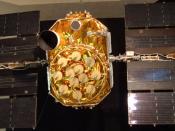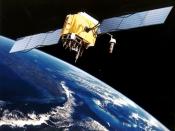This paper examines the Global Positioning System (GPS), previously known as the Navistar Global Positioning System, and how it is becoming an increasingly important part of everyday life for ordinary people, and is also increasingly important for broad commercial applications such as automobile guidance systems, cartography, hikers, and the like. Into the future, the uses for GPS will be even more diverse.
While its uses are many, at its root GPS provides users with accurate information about their position and velocity, as well as the time, anywhere in the world and in all weather conditions. This is of obvious importance for military purposes but also for every day life as well. This paper will look at the GPS's development, how it works, as well as its costs and benefits, and also the many uses of the GPS.
GPS: What is it?
GPS is a satellite based system that was designed by the US Department of Defense to "simplify and improve military and civilian navigation and positioning anywhere on earth."
There are three components to the system: the space component, the control component, and the user component. Looking first at the space component, there are 24 satellites orbiting approximately 10,900 nautical miles above the earth. These satellites travel along one of six orbital planes, with each one making a complete orbit in slightly less than 12 hours. All the while, these satellites are sending streams of radio signals to Earth that contain information on their orbit, the condition/status of the satellite, and importantly, the exact time as determined by their onboard atomic clocks. The reliability and accuracy of the entire GPS rests on the accuracy of the clock, but given that the atomic clock is known to only lose or gain one second every 6 million years, it
is safe...



Where are the pictures?
This essay mentions for the reader to refer to diagrams which are missing. There are no essays on this website which contain diagrams.
0 out of 0 people found this comment useful.